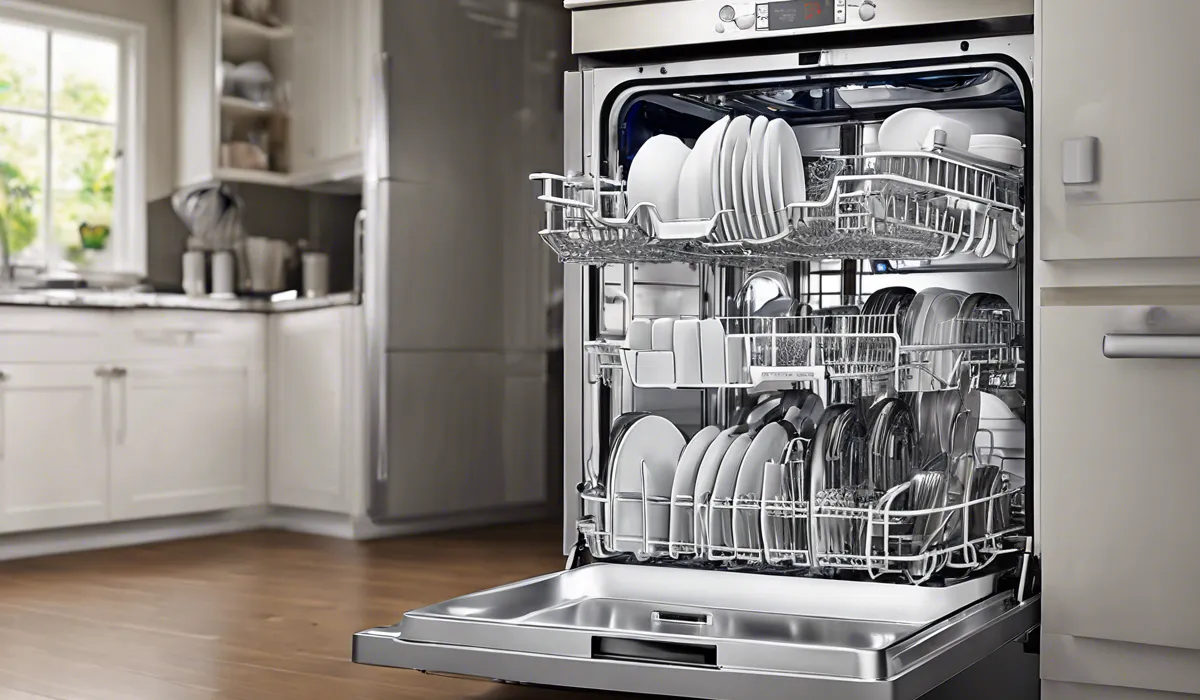How to Check Dishwasher Temperature: for Optimal Cleaning
To check your dishwasher temperature, use a waterproof thermometer. Place it securely on the upper rack during a cycle. After completion, read the temperature immediately. It should reach at least 130°F for optimal cleaning.
Understanding Your Dishwasher’s Temperature Settings

Common Dishwasher Temperature Settings
Dishwashers typically have a range of temperature settings designed to tackle different levels of soil and types of dishware.
The most common settings you’ll find are for normal wash, which usually uses water around 120°F to 140°F, and heavy-duty cycles, which can go up to 160°F for pots and pans with baked-on food.
Some dishwashers also have a sanitize cycle that uses even higher temperatures, often exceeding 150°F, to kill bacteria and ensure a hygienic clean.
Importance of Correct Temperature for Cleaning and Sanitation
Using the correct temperature in your dishwasher is crucial for both effective cleaning and proper sanitation. Water that’s too cold won’t dissolve detergent well or remove grease and grime effectively.
On the other hand, temperatures that are too high can cause etching on glassware or damage delicate items.
The sweet spot, which is typically around 130°F, ensures that your dishwasher detergent performs optimally, breaking down food residues and oils for a thorough clean.
Referencing Your Dishwasher Manual for Specifics
For the most accurate information regarding the temperature settings of your specific model, consult your dishwasher’s manual.
It will provide details on the temperature ranges for each cycle and instructions on how to select or modify these settings. If you do not have a physical copy, many manufacturers provide digital versions of their manuals online.
Methods to Check Dishwasher Temperature

Using a Dishwasher-Safe Thermometer
To accurately check your dishwasher’s temperature, invest in a waterproof, dishwasher-safe thermometer. Secure it on the upper rack, where it’s most likely to experience the average water temperature during a cycle.
Once the cycle is complete, open the dishwasher carefully to avoid any steam burns and read the thermometer immediately. The temperature should have reached at least 130°F for optimal cleaning and sanitation.
Testing with Heat-Sensitive Labels or Strips
Alternatively, you can use heat-sensitive labels or strips that change color or display a certain symbol when they reach specific temperatures.
These are placed on a dish inside the dishwasher before starting a cycle. After the cycle ends, you can check the label or strip to see if the correct temperature was achieved.
Effectively Placing Thermometers or Strips During a Cycle
For the best results when using either a thermometer or heat-sensitive strips, position them in a central location on the upper rack without obstructing the spray arms.
This placement ensures they are exposed to representative water temperatures throughout the cycle. Also, ensure that no large items are blocking the thermometer or strips, as this could result in an inaccurate reading.
Troubleshooting and Adjusting Dishwasher Temperature

Common Reasons for Incorrect Temperature
Incorrect dishwasher temperature can often be attributed to malfunctioning heating elements, a faulty thermostat, or even issues with your home’s water heater.
Additionally, if the dishwasher is overloaded or improperly loaded, it may prevent hot water from circulating correctly, leading to lower temperatures.
Steps to Adjust Dishwasher Temperature
Adjusting the temperature of your dishwasher typically involves settings on the machine itself, as most models do not allow for manual temperature adjustments.
Instead, select the appropriate wash cycle for hotter water or utilize the sanitize option if available.
If your dishwasher is not reaching the desired temperature during these cycles, you may need to adjust the temperature of your home’s water heater. However, it’s essential to be cautious and follow safety guidelines when doing so.
When to Call a Professional
If you have attempted to troubleshoot the temperature issue without success, it’s time to call a professional for maintenance or repair. Persistent problems with temperature could indicate a more severe issue that requires expert attention.
Professionals can diagnose and fix components like the heating element, thermostat, or other parts of the dishwasher that might be affecting its performance.
FAQs About Checking Dishwasher Temperature
How do I check the temperature of my dishwasher?
To check the temperature, place a waterproof thermometer on the upper rack of your dishwasher and run a cycle. After the cycle completes, read the temperature immediately.
What type of thermometer should I use to check my dishwasher’s temperature?
Use a waterproof thermometer designed to withstand high temperatures and the moist environment inside a dishwasher.
Where is the best place to put the thermometer in the dishwasher?
The best place to put the thermometer is securely on the upper rack of the dishwasher during a cycle.
When should I read the temperature on the thermometer?
Read the temperature immediately after the dishwasher cycle has completed to ensure an accurate reading.
What should the dishwasher temperature reach for optimal cleaning?
The dishwasher temperature should reach at least 130°F (54°C) for optimal cleaning performance.
Final Thoughts
To ensure your dishwasher’s efficacy, employ a waterproof thermometer placed on the upper rack during a wash cycle.
For accurate temperature reading, it’s crucial to check the thermometer right after the cycle ends. The temperature should be at a minimum of 130°F to guarantee optimal cleaning performance.





